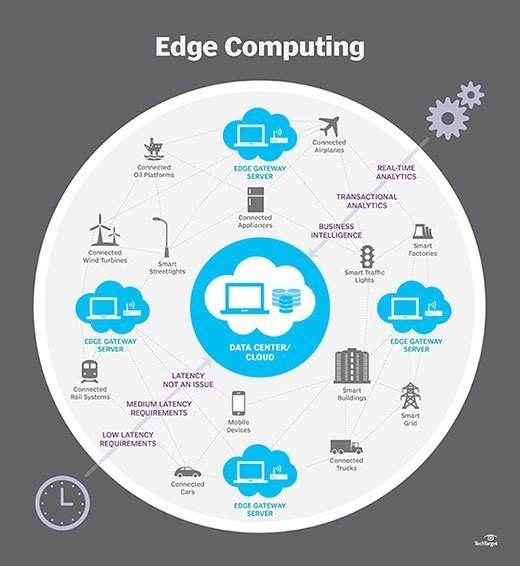
Fotolia
Offset IoT network demand with IoT edge analytics strategy
As more organizations add IoT devices, the resulting data streams run the risk of overloading the IoT environment. IoT edge analytics could help distribute the workload.
Internet of things devices create smart environments that integrate monitoring, control and embedded intelligence to drive automation.
IoT networks generally comprise devices with embedded sensors, actuators, network connectivity and software. They continuously monitor sensor readings, log and transmit data to centralized systems, and they receive feedback that then drives the actions of the devices.
However, as the number of internet of things (IoT) devices increases, so will the number of streams to the central system. Unless the system is engineered to dynamically scale, eventually it will no longer be able to handle the volume of incoming data.
That's where IoT edge analytics come in. IoT environments can be configured into a hierarchical network with intermediate computing systems between the actual IoT devices and the central system. These edge systems can then share the burden of analytical work with the centralized system.
IoT networks and edge analytics
Consider a networked soda vending machine, for example. The vending machine may include sensors to monitor external temperature, internal temperature, the number of soda cans of each flavor and the available change, as well as a thermostat and refrigeration units to modulate the internal temperature. Each transaction is logged, including purchases and situations in which a potential customer queried the machine -- e.g., pressed a button to check a price -- but did not purchase an item.
All the transactions and sensor readings from a collection of vending machines are transmitted to the central system, resulting in a number of simultaneous data feed streams that must be ingested, managed and analyzed.

There are different types of analysis that can be performed. Operational measurements can be used for descriptive reporting -- such as the volume of sales by flavor, by brand, by machine, by geographic region, by time, etc. However, some of the analyses are used for prediction, such as:
- tracking component failures to anticipate pre-emptive part replacement;
- modulating energy consumption;
- monitoring purchase patterns to influence restocking rates; and
- guiding orders and purchasing.
These are the types of analytics applications that drive business improvement by reducing costs, maintaining system uptime or increasing sales. These analyses benefit from collecting transaction data from the breadth of the IoT network, subjecting them to predictive analytics applications, and then generating predictive models that are used in concert with the ingested data streams to trigger pre-emptive actions.
As IoT devices continue to join the network, however, the resulting additional data streams run the risk of creating a bottleneck. This could not only compromise operational reporting, but it could also affect predictive applications if actions are not triggered within a reasonable time frame.
Fortunately, IoT edge analytics can help overcome this potential performance challenge. These systems can be situated close to a subnetwork of devices that control a more tightly coupled environment, such as a collection of different edge systems, each of which oversees a network of vending machines within a specific distributor's region.
The benefits of IoT edge analytics
Such a configuration allows the analytics work to be split between the centralized system and among those edge computers. The central system is responsible for collecting the data from the data streams, performing the analysis and generating the predictive models.
In turn, though, those models can be deployed at the edge computer, which can ingest a smaller set of data streams -- from among those devices within its designated subnetwork -- and apply that collected data to the instantiated predictive models.
The data can be forwarded along to the central system unchanged, or the IoT edge analytics system can filter out some of the data to reduce the computing burden. The central system continues to provide enterprise-wide operational analytics and may refine the predictive models, which can periodically be redeployed to the edge computers.
Alternatively, the centralized system can perform comparative assessments of the effectiveness of the predictive models within each of the subnetworks, determine if any tweaks to the analyses would result in improved performance and adjust the parameters accordingly to each edge computer's models.
Placing IoT edge analytics systems closer to a subnetwork of IoT devices can provide the following key benefits:
- Overall data latency is reduced, as the data flowing from the devices to the edge-based predictive models have a smaller distance to travel.
- Predictive models can execute faster because the triggering events are noticed sooner.
- Edge systems provide some degree of redundancy; if one edge system crashes, its duties can be transferred to another nearby edge system.
- One can improve data protection by masking sensitive data values traveling from the edge system to the central system. That way, the risk of data exposure is reduced in the event of a breach or compromise in network security.
Implementing an IoT edge analytics strategy can enhance the performance and effectiveness of your IoT environment. The edge computing model, in which some of the stream processing and analysis is offloaded to edge systems, enables IoT applications to gracefully scale as the networks expand.








